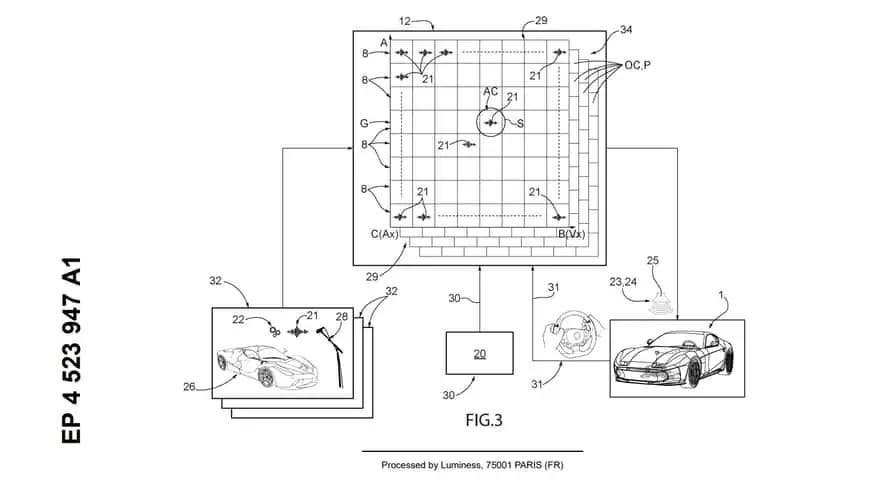The first electric Ferrari probably represents a fundamental and complex step in the approach to new mobility for an iconic brand strongly tied to internal combustion engines. These conditions require significant considerations, in accordance with the undoubtedly important engineering expertise available to the Prancing Horse. At the same time, the long involvement in motorsport could make the model, the first electric car coming in October, not particularly attractive to brand enthusiasts.
Will the first electric Ferrari have a manual transmission?

The first purely electric Ferrari, since hybrid variants are already available in the Maranello manufacturer’s range, will arrive by the end of this year with a couple of characterizations typical of traditional internal combustion models. It is already known that the Prancing Horse’s first electric car will use a fictitious exhaust system to reproduce the sound of a traditional internal combustion engine. Now, based on some patents, it is also known that Ferrari is working on a virtual gearbox system for its new electric vehicles. A system that could be similar to the one already used on the Hyundai Ioniq 5 N.
The most interesting patent among these two filed by Ferrari is definitely the one describing a system for upcoming electric vehicles that adopts an electric motor useful for guaranteeing a “virtual transmission” system to simulate the torque delivered by an internal combustion engine and the gear changes of a traditional transmission system. Gear shifting could occur through dedicated paddles, or they could be activated automatically.
However, Ferrari possibly won’t be able to implement this system on its first electric car, although some surprise of this kind could still be hypothesized. After all, the Maranello manufacturer has often stated that it aims to provide a driving and emotional experience very similar to that of its internal combustion models for its upcoming electric models. The system conceived by Ferrari is very similar to the one proposed by Hyundai on the high-performance electric Ioniq 5 N. The Korean manufacturer was the first to implement a similar system that emulates an 8-speed dual-clutch transmission. In this way, the Ioniq 5 N limits the torque delivered by the electric motor, introducing a sensation similar to that of an internal combustion engine, guaranteeing simulated gear changes in automatic or manual mode.

As already mentioned, the additional patent released by Ferrari relates to a device that, acting in synergy with the virtual gearbox, provides a soundtrack inspired by that produced by traditional internal combustion engines. An approach that is not the first time for Ferrari. Already in 2023, the Maranello manufacturer had patented a device useful for sound reproduction to offer an engaging sound experience to its future electric vehicles.
The system proposed by this recent patent adopts external and internal speakers that reproduce a digitally generated sound, corresponding to a virtual engine. The sound produced can be “historical, modern, futuristic, adrenaline-inducing or relaxing” based on a choice made by the driver according to their personal preferences. At the same time, the system also provides specific sounds for gear changes. The system proposed by the patent also describes methodologies useful for recording the sound of Ferrari variants equipped with internal combustion engines. Some recent spy videos of the Ferrari EV debut have offered some insights into this audio system in action. These revealed a deep, low rumble reminiscent of the sound of a powerful “traditional” internal combustion engine. It remains to be seen whether such patents will be sufficient to mitigate the many doubts of enthusiasts.

